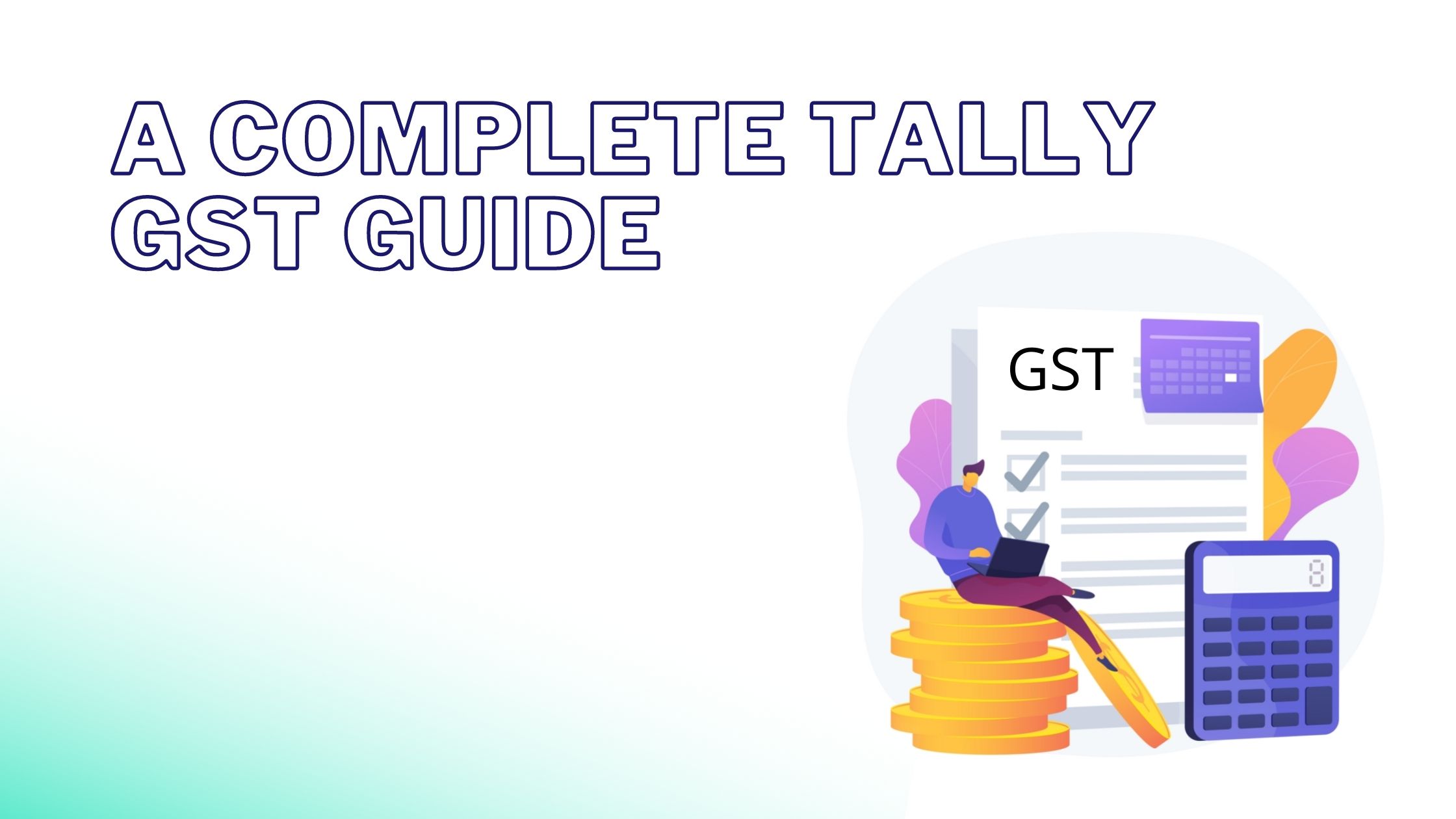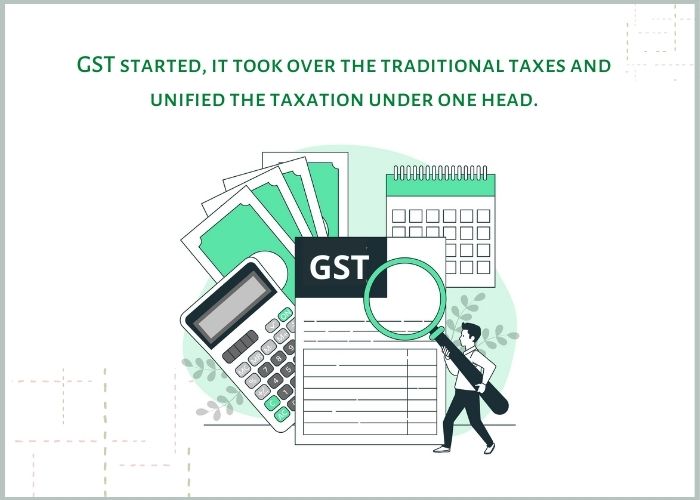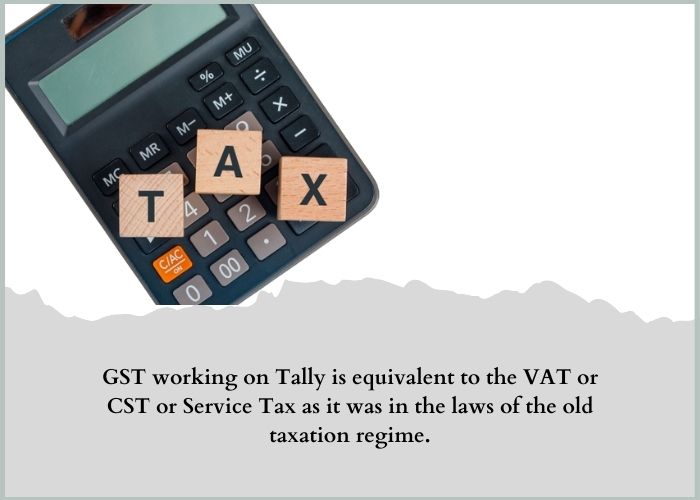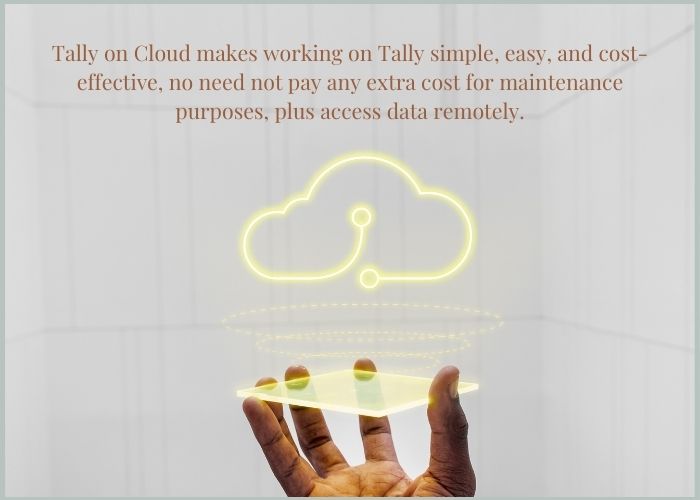
A Complete Tally GST Guide
GST Tally Information
Earlier, two categories of taxes were imposed on goods, namely direct and indirect taxes. In the earlier indirect taxation scheme, some excise duty was levied by the central government, and VAT (value-added tax) was imposed by the state government, making it very difficult to buy and sell goods. To solve this issue, GST was introduced.
Which is equivalent to all the taxes one has to pay at a different level. For every taxpayer, a GST state code is issued. The use of GST numbers is to give each transaction a separate label so that the tax authorities can properly store their data.
To make the whole process of calculating and storing this data easier, GST based Tally ERP software was introduced in the market. With Tally, GST came many features like the GST classification with which the details like the HSN, SAC can be stored under one head and made available when needed simplifying the whole GST process.

What is GST Act?
The Goods and Services Tax Act was introduced in 2017 as an act by the government with many stages of infrastructure through which the tax was levied. When GST started, it took over the traditional taxes and unified the taxation under one head.
To better understand the use of GST and how businesses can utilize it, software like Tally ERP 9 GST was introduced, making GST accounting simple. But, to run this software, one must know Tally GST system requirements: One should have a 4GB ram and a normal working desktop, that’s it.
What are the components of GST?
There are three major components of GST. The whole GST process is distributed among state, center, and inter-state transactions. So, in Tally GST entry is done because of which component has levied tax or where the tax goes.
What are the tax types under GST?
There are overall three GST of type–
- First, Central GST– the tax goes to the center, restricted to the state.
- Secondly, State GST– the tax goes to the state, area of sales restricted to the state.
- Thirdly, Integrated GST– the tax goes to the center, which is not restricted to the state.
How to create a company in Tally software?
One can create a company by going to the Tally gateway and then finding the create company option, filling in all the necessary details asked, setting the field according to the need, enter the Tally vault credential and here you are ready to go by clicking save.
How to activate GST features in Tally?
Press F11 followed by the feature option and then F3, enable the GST and GST details option, followed by the details screen wherein you can modify details like GSTIN number. Press save, and the work is done.
How to create a ledger in Tally?
Enter Tally gateway, click on account info, then on a ledger, and then press create, now modify it accordingly and save it. You can also create a GST ledger by including GST features which are discussed later. You can opt for accounting entries once you’re done with creating a ledger in Tally ERP 9.
How does GST work in Tally?
GST working on Tally is equivalent to the VAT or CST or Service Tax as it was in the laws of the old taxation regime. So, there is a simple process of how the GST works – Firstly, One needs to input details of the transaction like location, value, and GST rate on Tally ERP 9.
Now, the GST will be calculated based on the data given. After that, the tax type will be selected, and the accounting entry will be prepared. Now, the tax value will be obtained because Tally automatically calculates the tax.

How to create GST Ledger in Tally ERP?
One can create tax ledgers such as the GST ledger by creating a simple ledger, going to the under option, and clicking on the Tally duties & taxes option, and there will be many options in the tax/duties need to select GST.
How to create an SGST ledger in Tally software?
To create an SGST ledger, you’ll first have to make a GST ledger. You will have to opt for State tax in the Tax type option.
How to create a CGST ledger in Tally software?
Let’s get to know what is CGST ledger is. The same process must be followed to create a CGST ledger, but you need to opt for Central tax instead of state tax in the tax type option.
How to create an IGST ledger in Tally software?
Again, you have to create a GST ledger and then go for the Integrated Tax as the tax type. Your IGST ledger will be ready.
How to create Tally GST Sales Bill?
It is just like the bill shopkeeper gives us physically when we go to the market. GST sales bill is just the digital format of that bill, like a printed, well-mannered bill. So, let’s input sale purchase entry in Tally by coming to the Tally gateway and opting for accounting vouchers. Now press F8.
To add different GST rates in a single bill, one can press No to the common ledger option after opening the configuration menu. Don’t forget to save your command by pressing CTRL+A and now entering GST details for different rates GST. Press enter and save everything.
How to access the GST returns in Tally?
One does not have to worry about the GST returns in Tally. As Tally offer many advantages and it automatically generate GSTR-1 and GSTR-2. You can go to the Tally gateway and then to the display, then to the statutory reports, which you’ll find under the display menu, then GST, and then to GSTR-1(for GSTR-1), the return will be ready, and if one wants to correct something, change the GST filling details accordingly. One can also save the report in offline mode in excel format by pressing CTRL+E.
Conclusion:
Usually, creating a GST return is very easy because everything is done previously and automatically. Still, for that, one needs to create the purchase and sales bills accurately. One can also use Tally on Cloud to enhance performance, which comes under cloud computing. It makes working on Tally simple, easy, and cost-effective, you need not pay any extra cost for maintenance purposes, plus you can access your bills, ledgers from almost anywhere, staying remotely. Tally solution is a smart option for a smarter audience. To Get your Tally Cloud service contact Tallycloudhub.

FAQ
What are the steps to configure Tally for GST?
Tally configuration can be done by going to the tally gateway and then press F11 or features, now go to the company or press F3, now there will be two options. First, for enabling GST in Tally ERP 9 and the other to set up GST details. You need to agree to both of them. Now enter the details so that your Tally ERP 9 step is complete.
How GST is altering the tax regime in India?
GST is a form of the indirect tax regime challenging the concept of tax collection from various levels to freely sell or buy goods and not be a culprit of various tax barriers. Financial independence is everyone’s right, and GST is helping us maintain the equilibrium.

